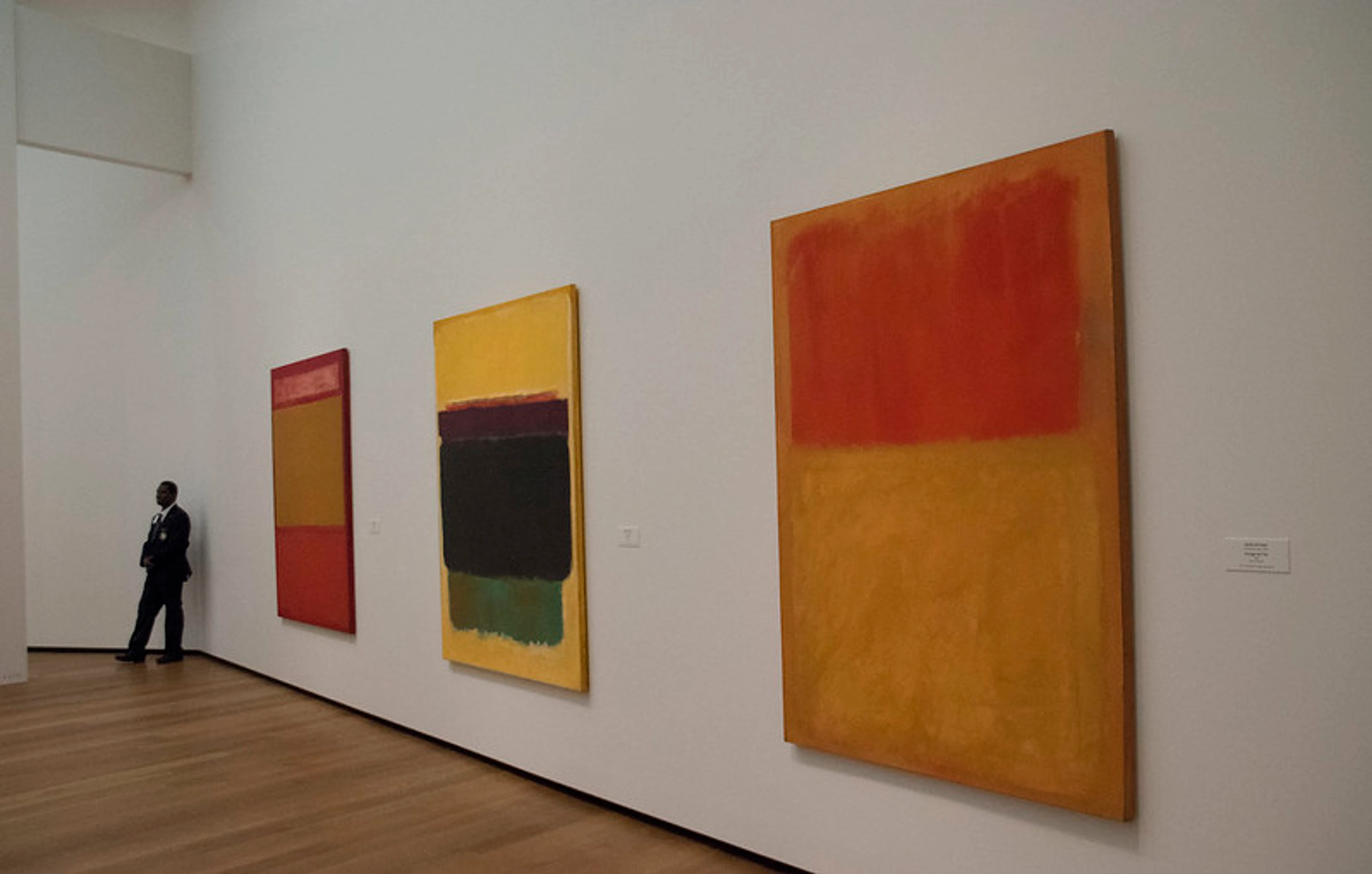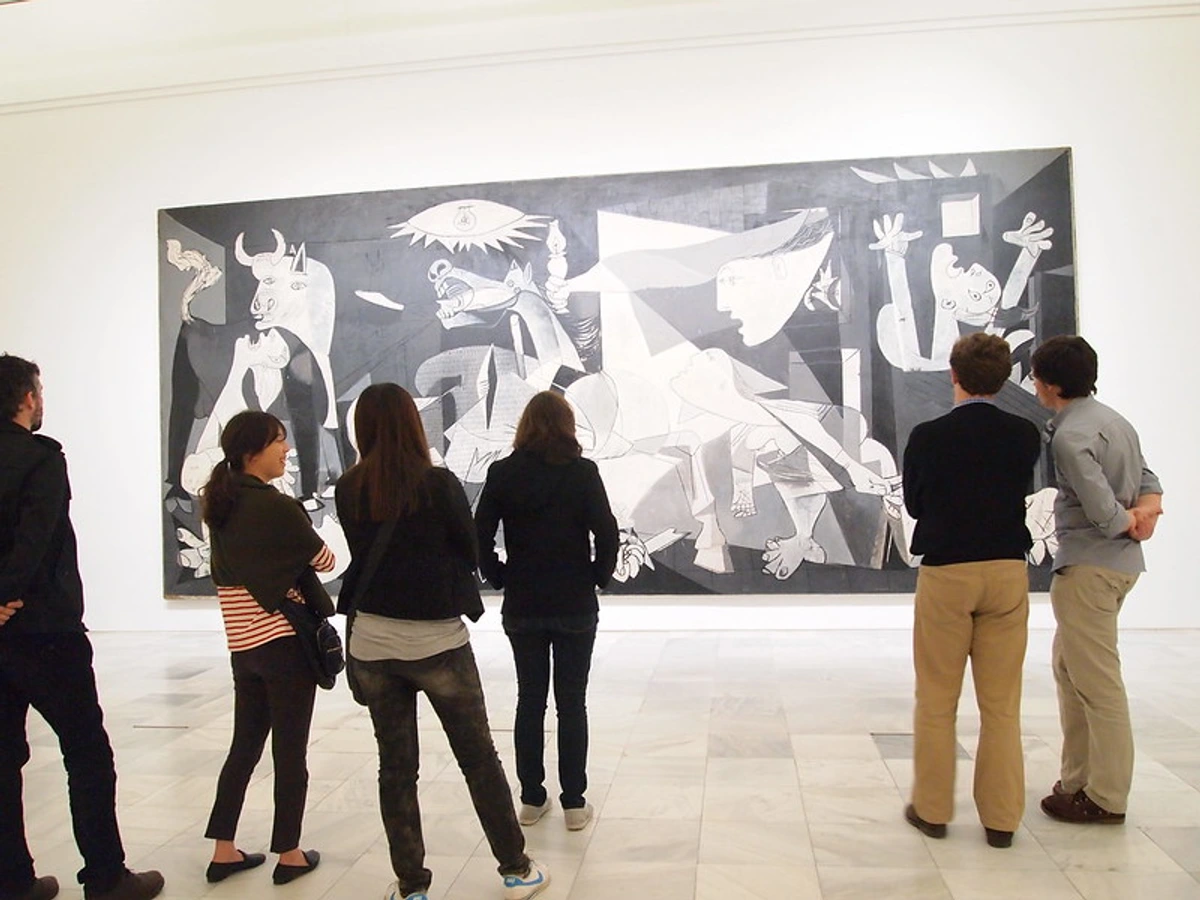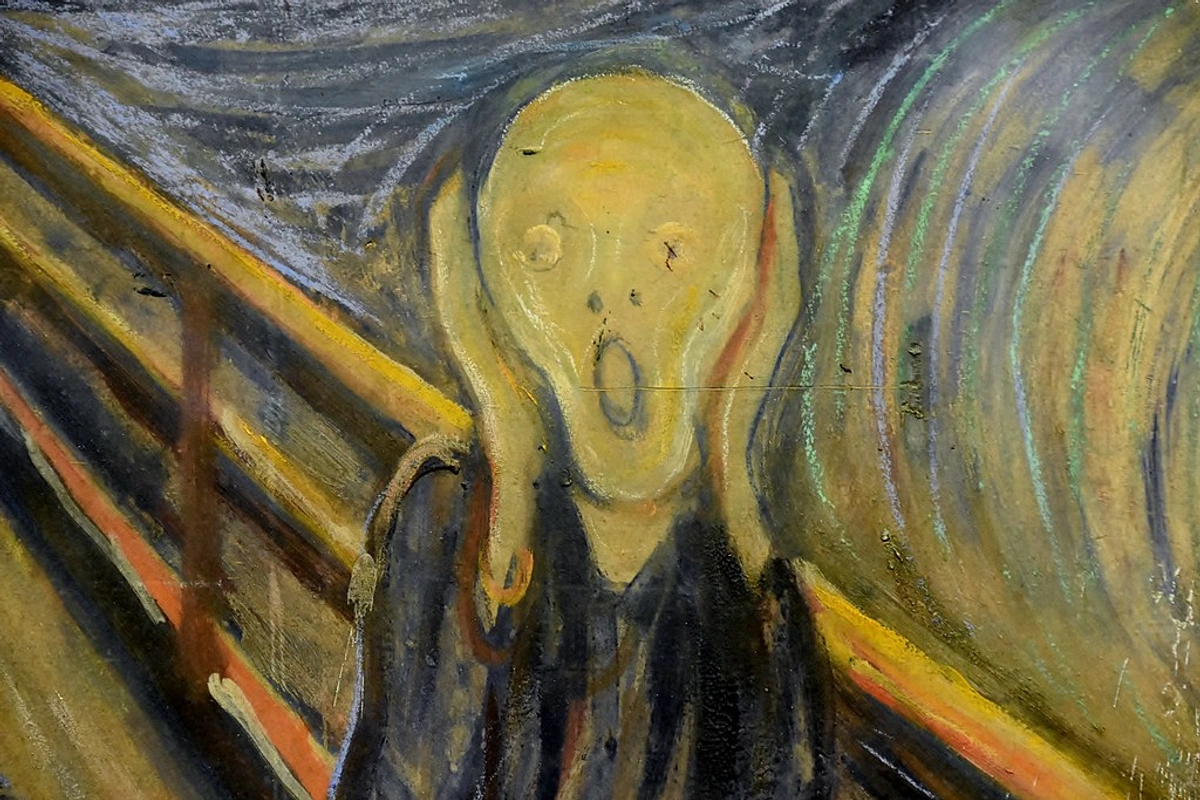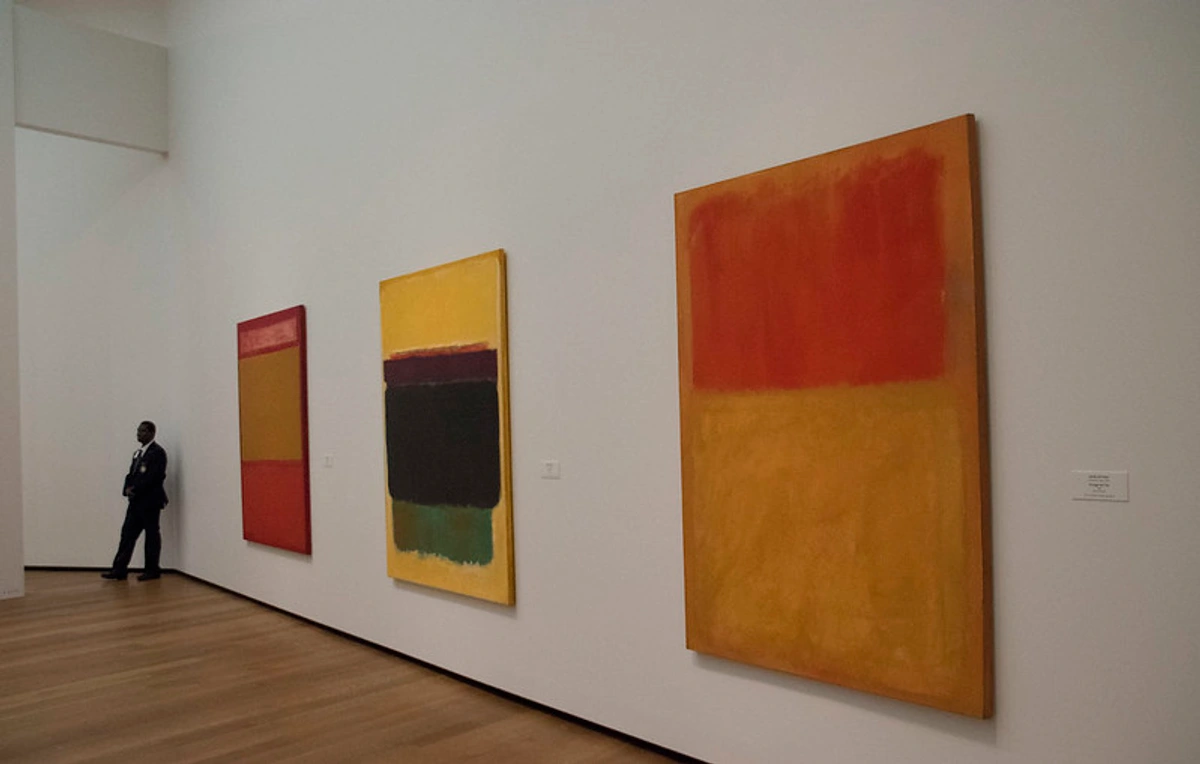
Famous Paintings: An Artist's Guide Beyond the Hype
Go beyond the postcard! Explore what makes famous paintings iconic through an artist's personal lens. Dive into masterpieces, stories, and why they connect (or don't).
Famous Paintings: Your Ultimate Guide Beyond the Hype (and the Postcards) - An Artist's View
Let's be honest, you've seen them. On mugs, t-shirts, dodgy mousepads, maybe even projected onto a building. Certain paintings achieve a level of fame that borders on the absurd. They become cultural wallpaper. But have you ever stood in front of one, perhaps in a crowded museum, jostling for a view, and thought, 'Okay, I see it... but why is this the one?'
Or maybe you felt it – that little jolt, that unexpected connection across centuries or styles. Suddenly, it wasn't just famous art; it was art. It spoke to something in you. As an artist myself, I've spent countless hours pondering this – what is it about these painted rectangles that captures the collective imagination? Is it the skill? The story? Or something else entirely?
This guide is about navigating that space between the postcard hype and the actual canvas. We'll dive into what catapults a painting into the stratosphere of fame, look at some of the usual (and maybe unusual) suspects, and ponder why these painted rectangles continue to hold such power. Consider this your engaging, slightly reflective, and hopefully comprehensive journey into the world of famous paintings, seen through the eyes of someone who spends their days wrestling with pigment and surface.
First Things First: What Even Is a Painting?
Seems basic, right? But sometimes the simplest questions are worth revisiting. At its core, a painting is pigment (colour) applied to a surface (like canvas, wood, or wall). Artists use tools like brushes, knives, or even their hands to create images, express ideas, or evoke emotions. It's a fundamental form of human expression, stretching back tens of thousands of years.
From my perspective, it's also a conversation. A dialogue between the artist and the material, and then between the artwork and the viewer. It's the smell of the paint, the texture of the canvas under my hand, the way colours interact in unexpected ways. It's a physical act, messy and immediate, that somehow translates into something intangible – a feeling, a thought, a moment captured. Paintings can be representational (showing things as they look), abstract (focusing on colour, form, and texture rather than recognizable objects - check out famous abstract art here), or somewhere in between. They use elements like line, shape, colour, texture, and value to build a world within a frame (or sometimes without one!). If you want to dig deeper into understanding the building blocks, our guide on how to read a painting is a great place to start.
The Secret Sauce: What Makes a Painting Famous?
Fame in the art world isn't always about being the 'best' (whatever that means - a whole other conversation explored in 'What Makes Art Important?'). It’s often a messy cocktail of factors, sometimes seemingly random, sometimes carefully orchestrated. From an artist's viewpoint, it can be baffling, inspiring, or even a little disheartening. Here are some key ingredients:
- Artistic Innovation & Skill: Did the artist break the mold? Did they invent a new technique or push an existing art style to its limits? Think of the revolutionary impact of Impressionism or the mind-bending perspectives of Cubism. Sometimes sheer, undeniable technical mastery plays a role, leaving viewers in awe. As an artist, I look at the skill, the control (or deliberate lack thereof), the choices made with the medium. It's like looking under the hood of a masterpiece.
- Historical Context & Significance: Does the painting capture a pivotal moment in art history or reflect a major societal shift? Does it tell a powerful story about its time? Art doesn't exist in a vacuum; its connection to the world around it often fuels its fame. Guernica, for instance, is inseparable from the Spanish Civil War.
- Cultural Impact & Recognition (The Reproduction Factor): This is where the snowball effect kicks in. Once a painting becomes well-known, it gets reproduced endlessly. It appears in books, films, and yes, on those mugs. It becomes part of the shared visual language. Sometimes, a dramatic event catapults it into the public eye – like the Mona Lisa's theft. This widespread visual presence, even if divorced from the original, cements its fame. It's fascinating how an image can take on a life of its own.
- The Story & Controversy: People love a good story. Was the artist a tortured genius? Was the painting controversial or misunderstood in its time? Was it hidden, lost, or stolen? These narratives add layers of intrigue and make the artwork more memorable. The drama surrounding a piece can sometimes overshadow the art itself, which is a strange phenomenon.
- Museum & Gallery Power: Let's not underestimate the influence of major institutions. Being acquired by a top museum or famous gallery gives a painting immense validation and exposure. Curators and critics shape the narrative around artworks. They decide what gets seen, and how it's presented, which is a huge responsibility.
- Market Value: While controversial, the astronomical prices some paintings fetch (understanding art prices is complex!) undoubtedly contribute to their fame. It generates headlines and makes people ask, 'Why is that worth so much?' (Why do rich people buy art anyway?) The market can be a strange beast, sometimes valuing hype and provenance as much as, or more than, the artwork itself.
It's rarely just one of these things. Usually, it's a combination, brewing over time, that cements a painting's place in the hall of fame. And sometimes, it feels like pure chance.
A Whirlwind Tour: Icons on Canvas
Okay, let's look at a few examples. This isn't exhaustive – the list of famous paintings is vast – but it gives a taste of the different ways fame happens, and perhaps a glimpse into why they resonate.
1. Leonardo da Vinci - Mona Lisa (c. 1503–1506, maybe later)
Perhaps the most famous painting. Surely. Its fame is so immense it almost obscures the painting itself. Standing in the Louvre, you see a crowd, a small painting behind glass, and the weight of centuries of adoration. Why this one? Beyond the legends and the slightly unsettling feeling of being one of millions who have gazed upon her, the historical reasons for her fame include:
- Leonardo's Innovative Technique: His mastery of sfumato (smoky blurring of outlines) gives her face and the landscape a soft, lifelike quality that was revolutionary.
- The Enigmatic Expression: That smile. Is she smiling? Is she not? It's ambiguous, inviting endless interpretation and projection.
- Incredible Survival: It's a relatively small wooden panel that has survived centuries, including a famous theft in 1911 that catapulted it into global headlines and cemented its status as an icon.
- Leonardo's Reputation: He was already a legend in his time, and this was a work he kept with him, adding to its mystique.
(Okay, maybe that story about it being a self-portrait of a pregnant Da Vinci isn't quite historically accurate, but isn't it more fun to imagine?) The reality is complex enough. The sheer weight of its fame is a phenomenon in itself. It's less about the painting now, and more about the idea of the Mona Lisa.
2. Vincent van Gogh - The Starry Night (1889)
![]()
Ah, Van Gogh. The epitome of the tortured artist archetype. The Starry Night, painted during his stay at an asylum, pulses with raw emotion and energy. Its fame comes from:
- Emotional Power: The swirling sky and vibrant colours feel almost alive, conveying intense feeling. It resonates with our own experiences of awe and perhaps turmoil. As an artist, I'm drawn to the sheer energy in those brushstrokes, the visible struggle and passion.
- Van Gogh's Story: His tragic life story, documented in his letters, adds a poignant layer. We see the painting through the lens of his struggles and passion. (Dive deeper into his life and art in our Ultimate Guide to Van Gogh). It's hard to separate the man from the myth, and the myth fuels the fame.
- Unique Style: His thick impasto (visible brushstrokes) and bold colour choices were revolutionary and remain instantly recognizable. That texture, that almost sculptural use of paint – it's something you can almost feel just by looking.
It reminds me of looking up at the sky on a particularly overwhelming day – maybe after a frustrating attempt at painting or just life being life – and feeling both small and connected to something vast. Van Gogh captured that feeling, cranked up to eleven. It's a painting that feels like a scream and a prayer simultaneously.
3. Pablo Picasso - Guernica (1937)

Not all famous paintings are pretty. Guernica is a monumental, harrowing depiction of the bombing of a Basque town during the Spanish Civil War. Its fame is rooted in:
- Political Statement: It's one of the most powerful anti-war statements ever painted. Its stark black, white, and grey palette emphasizes the brutality and suffering. It's art used as a weapon against injustice.
- Scale and Impact: It's huge (almost 3.5m x 7.8m), overwhelming the viewer with its chaotic scene of fragmented bodies, screaming figures, and symbols of violence. You don't just look at Guernica; you are enveloped by it.
- Picasso's Style: It masterfully blends his signature Cubist style with elements of Surrealism to convey chaos and psychological trauma. (Explore Picasso's genius here). The fragmentation isn't just stylistic; it reflects the shattering of lives.
Seeing Guernica (or even a good reproduction) is an intense experience. It forces you to confront the horrors of war in a way that news reports often can't. It’s art as activism, raw and unforgettable. It makes you feel the weight of history.
4. Edvard Munch - The Scream (1893)

Instantly recognizable, The Scream has become a universal symbol of modern anxiety and existential dread. Why so famous? Perhaps because it taps into something we all feel but struggle to articulate.
- Universal Emotion: That skeletal figure clutching its head under a blood-red sky taps into a primal feeling of anguish that many people can relate to, even if they don't know why. It's the feeling of the world being too loud, too much.
- Expressionism Pioneer: It's a key work of Expressionism, focusing on subjective experience over objective reality. Munch painted how the world felt to him, not just how it looked.
- Pop Culture Icon: It's been endlessly parodied and referenced, cementing its place in the public consciousness (think emojis, movie posters, etc.). This widespread reproduction, like the Mona Lisa, has given it a life far beyond the canvas.
Most of the time, crying seems weird to me. But I'm also not the best at understanding other people's feelings. My mom and sister cry rather frequently. My girlfriend is kinda similar as well. Sometimes, looking at The Scream, I feel like I understand that urge a little better – that overwhelming moment when the world feels like too much. It's a visual representation of a feeling I sometimes glimpse in others, or maybe even in myself on a bad day.
5. Mark Rothko - No. 14, 1960 (or similar Color Field works)

Moving into abstraction, Rothko's large canvases of shimmering, hovering rectangles of colour might seem simple, but they are deeply famous and influential, particularly within Abstract Expressionism. They challenge our traditional ideas of what a painting should be.
- Emotional Immersion: Rothko wanted viewers to have an almost spiritual experience, to be enveloped by the colour. Standing close to a large Rothko can be surprisingly moving. It's about feeling the colour, letting it wash over you.
- Abstract Innovation: He pushed abstraction towards pure colour and feeling, influencing generations of artists. He stripped away representation to get to the core of emotional expression through colour and form.
- The 'My Kid Could Do That' Factor: Ironically, the perceived simplicity sometimes fuels discussion and fame. It makes people question what art is and what makes abstract art compelling (more on that here). This controversy, this challenge to perception, is part of its fame.
- Rothko's Story: His intense personality and eventual suicide add a tragic dimension that colours how people view his work. (Learn more in the Ultimate Guide to Rothko). The artist's life becomes intertwined with the work.
It takes a different kind of looking. It's not about recognizing something; it's about letting the colours wash over you. It's like listening to music without lyrics – pure feeling. As someone who works with colour and abstraction, I find his dedication to pure emotional impact through colour profoundly inspiring, and also incredibly difficult to achieve.
6. Johannes Vermeer - Girl with a Pearl Earring (c. 1665)
Moving back in time, this Dutch masterpiece has achieved immense fame, often dubbed the "Dutch Mona Lisa." Its appeal is different from the dramatic or abstract works we've discussed.
- Mysterious Subject: Who was she? Her identity is unknown, adding an air of intrigue. Her direct gaze and slight turn of the head create an intimate connection with the viewer.
- Masterful Technique: Vermeer's use of light, particularly the highlight on the pearl earring and the subtle modelling of her face, is breathtaking. The clarity and realism, combined with the soft light, are technically stunning.
- Simplicity and Intimacy: Unlike grand historical paintings, this is a simple portrait (or tronie, a study of a face). Its power lies in its quiet intensity and the feeling of catching a fleeting moment.
- Literary and Film Popularity: Like the Mona Lisa, its fame has been amplified by popular culture, notably a bestselling novel and film.
As a Dutch artist, seeing this painting feels like looking at a piece of my own artistic heritage. The way Vermeer captured light, the stillness, the quiet dignity – it's a different kind of power than Van Gogh's energy, but just as profound. It makes me think about the subtle ways light and shadow can create emotion.
7. Michelangelo - The Creation of Adam (c. 1508–1512)
While the entire Sistine Chapel ceiling is a masterpiece, this specific panel has become one of the most reproduced images in history. It's not a painting on canvas, but a fresco – paint applied directly to wet plaster.
- Iconic Imagery: The near-touching hands of God and Adam are instantly recognizable and symbolize the spark of life, the divine connection. It's a powerful, simple gesture that conveys profound meaning.
- Religious and Cultural Significance: Part of a vast, ambitious project in the Vatican, it holds immense importance within Christianity and Western culture.
- Michelangelo's Genius: Created by one of the most revered artists in history, known for his mastery of the human form. The anatomical detail, even in this stylized moment, is incredible.
- Scale and Context: Seeing it in situ, high above you in the Sistine Chapel, is an overwhelming experience that adds to its mystique and fame.
Thinking about Michelangelo working on his back, high up on scaffolding, applying paint to wet plaster before it dried... it's mind-boggling. The sheer physical and mental effort, combined with the scale and the enduring power of the image, makes you appreciate fame born from monumental effort and vision. It makes my own studio struggles feel... slightly less dramatic, perhaps.
Beyond the Blockbusters
Fame is fickle, and often Eurocentric and male-dominated. Countless incredible paintings exist beyond the ones that make it onto tote bags. Part of the joy of art is discovering your famous paintings – the ones that resonate personally, regardless of their official status. Maybe check out some guides to modern artists or contemporary artists to find new favourites. There's a whole world of art out there waiting to be discovered, often by artists who are just as brilliant but perhaps lacked the right combination of historical context, market forces, or dramatic backstory to achieve global postcard fame.
Experiencing the Icons (and Finding Your Own)
So, how do you engage with these famous works, or any artwork for that matter? It's more than just looking; it's about connecting.
- Visit Museums: Seeing a painting in person is different. Scale, texture, the way the light hits it – it often reveals things a reproduction can't. You see the brushstrokes, the layers of paint, the artist's hand. It's a physical object with a history. Check out guides to the best museums in Europe, the US, Asia, or even explore the unique experience offered at smaller venues like my own little museum in 's-Hertogenbosch, dedicated to my journey. Every museum visit is a chance for a new encounter.
- Learn to Look: Spend time with a painting. Don't just glance. Use resources like our guide on how to read a painting to understand composition, symbolism, and technique. What choices did the artist make? Why that colour? Why that line? It's like learning a new language.
- Context is Key: Knowing a bit about the artist, the time period, and the art movement can dramatically enrich your understanding. It helps you see the painting not just as an object, but as a product of its time and place.
- Prints vs. Paintings: Owning an original famous painting is unlikely for most of us! But high-quality prints can bring that beauty into your home. Understand the difference between prints and paintings and why buying art prints can be a great option. It's about finding ways to live with art you love.
Caring for Famous (and Not-So-Famous) Paintings
Whether it's a multi-million dollar masterpiece or a cherished piece you bought last week, paintings need care. Museums employ teams of experts, but even at home, you can take steps to preserve your art. This involves understanding the materials, controlling the environment, and knowing when to seek professional help. Our guide on how to take care of your painting offers comprehensive advice, covering everything from cleaning to framing and storage. It's a responsibility that comes with the joy of ownership.
Famous Paintings in Your Home?
While you probably won't hang the Mona Lisa over your sofa, you can bring art that resonates with you into your space. Exploring contemporary art, perhaps even works by living artists (like the ones available here), allows you to find pieces that speak to your taste and become your own personal 'famous' paintings. It's about finding that connection, that piece that makes your walls come alive. It's about building your own collection of art that is famous to you.
Frequently Asked Questions (FAQ)
Q: What is the most famous painting in the world?
A: Leonardo da Vinci's Mona Lisa is generally considered the most famous painting globally, largely due to its history, enigmatic subject, and widespread reproduction.
Q: Why are famous paintings so expensive?
A: Prices are driven by rarity, artist reputation, historical significance, provenance (ownership history), condition, and market demand. High prices often reflect cultural value and investment potential. Understanding art prices gives more insight.
Q: Can I see all the famous paintings in one place?
A: No single museum holds all famous paintings. They are spread across major institutions worldwide, like the Louvre (Paris), MoMA (New York), the Prado (Madrid), the National Gallery (London), and many others. Our guide to the world's best museums and galleries can help you plan.
Q: Is famous art always the 'best' art?
A: Not necessarily. 'Best' is subjective. Fame often involves factors beyond pure artistic merit, like historical accidents or market trends. There's incredible art that isn't widely famous. Check out our thoughts on what makes art 'important'.
Q: How does fame affect a living artist?
A: Fame can bring opportunities, recognition, and financial success, but also pressure, scrutiny, and challenges to creative freedom. It can shift the focus from the art itself to the artist's persona and market value. It's a complex dynamic.
Q: How can I learn more about specific famous paintings or artists?
A: Museum websites, art history books, documentaries, and dedicated artist guides (like our guides to Van Gogh, Picasso, Rothko, etc.) are excellent resources.
Conclusion: Beyond the Hype, Towards Connection
Famous paintings are cultural touchstones. They reflect history, innovation, and the enduring power of human creativity. Sometimes the hype can feel overwhelming, obscuring the artwork itself. But looking beyond the fame, engaging with the stories, the techniques, and the emotions embedded in the canvas can be incredibly rewarding. As an artist, I see the struggle, the intention, the sheer human effort behind these icons. I also see the moments where they transcend technique and history to simply be.
Whether you're standing before the Mona Lisa or discovering a lesser-known gem, the real magic happens when a painting connects with you on a personal level. It's that quiet moment of recognition, that unexpected feeling, that spark. So go explore, look closely, and find the art that becomes famous to you. Perhaps you'll even find inspiration in an artist's personal creative journey, or maybe you'll simply find a piece that makes your living room feel a little more like home.
It's not about the fame; it's about the feeling.




